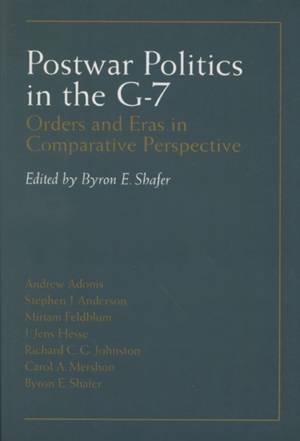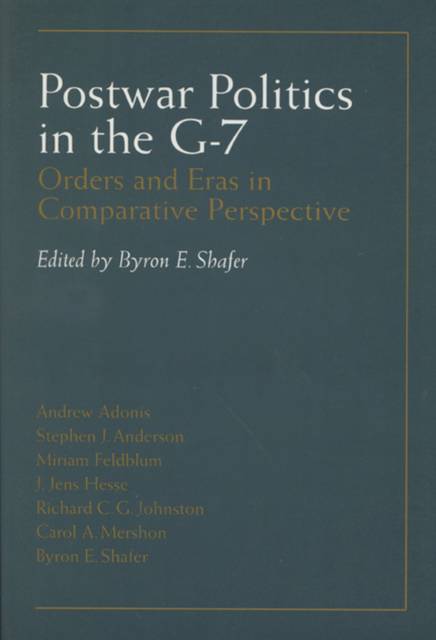
Bedankt voor het vertrouwen het afgelopen jaar! Om jou te bedanken bieden we GRATIS verzending (in België) aan op alles gedurende de hele maand januari.
- Afhalen na 1 uur in een winkel met voorraad
- In januari gratis thuislevering in België
- Ruim aanbod met 7 miljoen producten
Bedankt voor het vertrouwen het afgelopen jaar! Om jou te bedanken bieden we GRATIS verzending (in België) aan op alles gedurende de hele maand januari.
- Afhalen na 1 uur in een winkel met voorraad
- In januari gratis thuislevering in België
- Ruim aanbod met 7 miljoen producten
Zoeken
Postwar Politics in the G-7
Orders and Eras in Comparative Perspective
Byron E Shafer
Paperback | Engels
€ 27,45
+ 54 punten
Omschrijving
This concise, comparative history looks at politics in the nations collectively known as the Group of Seven--the United States, Canada, Britain, France, Germany, Japan, and Italy--from the end of the Second World War to the end of the Cold War. Emphasizing political eras and political orders, editor Byron E. Shafer and the contributing authors use an identical framework for each nation as they consider its political evolution and the structures that shaped it. No other book offers this comparative reach or this common framework, making Postwar Politics in the G-7 useful for both students and sophisticated observers of international politics.
Postwar Politics in the G-7 provides a condensed introduction to the politics of each of the seven nations, focusing on the main political events of the last fifty years and the factors that shaped the ways each country handled those events. By presenting these accounts in a precisely parallel fashion, this volume highlights similarities and differences among the nations. Concluding chapters reassemble these comparisons for all seven of the nations together. Among the most interesting findings are the rise of an activist politics, the continuing influential role of electoral systems, and the presence of divided governance nearly everywhere. Such a carefully constructed interpretation of postwar politics highlights potentially critical elements and provides comparative insights that are essential for understanding the Group of Seven nations.
Postwar Politics in the G-7 provides a condensed introduction to the politics of each of the seven nations, focusing on the main political events of the last fifty years and the factors that shaped the ways each country handled those events. By presenting these accounts in a precisely parallel fashion, this volume highlights similarities and differences among the nations. Concluding chapters reassemble these comparisons for all seven of the nations together. Among the most interesting findings are the rise of an activist politics, the continuing influential role of electoral systems, and the presence of divided governance nearly everywhere. Such a carefully constructed interpretation of postwar politics highlights potentially critical elements and provides comparative insights that are essential for understanding the Group of Seven nations.
Specificaties
Betrokkenen
- Auteur(s):
- Uitgeverij:
Inhoud
- Aantal bladzijden:
- 360
- Taal:
- Engels
Eigenschappen
- Productcode (EAN):
- 9780299151041
- Verschijningsdatum:
- 19/07/2005
- Uitvoering:
- Paperback
- Formaat:
- Trade paperback (VS)
- Afmetingen:
- 151 mm x 227 mm
- Gewicht:
- 458 g

Alleen bij Standaard Boekhandel
+ 54 punten op je klantenkaart van Standaard Boekhandel
Beoordelingen
We publiceren alleen reviews die voldoen aan de voorwaarden voor reviews. Bekijk onze voorwaarden voor reviews.









